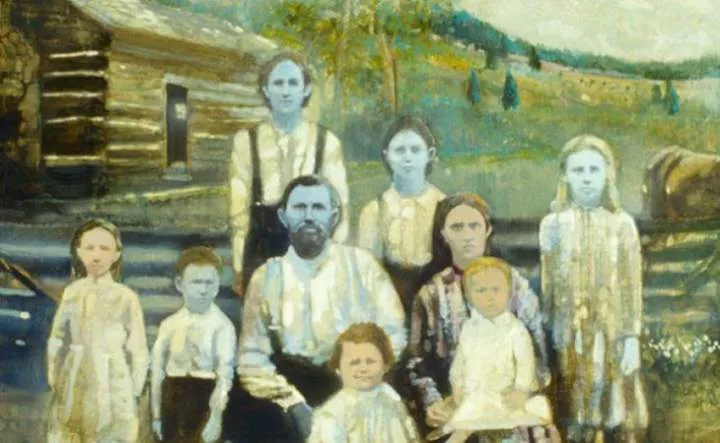![The blue people truly existed [MidiLibre] The blue people truly existed [MidiLibre]](https://static.netnaija.com/i/Dxaw1qlQKPZ.webp)
This story might sound like a tall tale from an old storybook, but it is real.
Now, I know what you're thinking: "Blue people? That can't be real!" But hold your horses, because this isn't a yarn spun from fiction.
The Blue People of Kentucky were the Fugate family, who lived in the hills of Kentucky and were known far and wide for their distinct blue skin, an extraordinary genetic condition that baffled locals and scientists alike for generations.

But why were they blue? It wasn't a trick of the light or a penchant for body paint.
The genetic mystery behind the blue skin
The blue skin of the Fugate family was caused by a condition known as methemoglobinemia. This rare genetic disorder affects the way red blood cells carry oxygen throughout the body.
Normally, red blood cells contain a molecule called haemoglobin, which binds to oxygen and carries it to various parts of the body. In methemoglobinemia, an abnormal form of haemoglobin called methemoglobin is produced, which has a reduced ability to release oxygen to body tissues. The high levels of methemoglobin in the blood give it a blue tint, which is visible through the skin.
The role of inheritance
Methemoglobinemia in the Fugate family was due to a recessive gene. A recessive gene only shows its effects if an individual has two copies of it, one from each parent. In the case of the Fugates, the isolation and limited population in their community led to close intermarriages, increasing the likelihood of this rare gene being passed to future generations.

The societal context
The Fugate family lived in the isolated Appalachian Mountains, a region known for its rugged terrain and limited access to the outside world. This isolation played a significant role in the limited marriage choices available to the Fugates. Marrying within the community, often within the extended family, was not uncommon due to the geographical and social isolation of the area.
Impact on the Fugate family
The unique blue skin of the Fugates brought them both curiosity and stigma. They were the subject of local folklore and misunderstanding. Despite the challenges, the family continued to live and work in their community.
Medical intervention
The mystery of the Fugate family's blue skin began to unravel with the advancement of medical science. In the 20th century, doctors and researchers took an interest in the family's condition. Through blood tests and genetic analysis, they confirmed the presence of methemoglobinemia and started treatment.
The treatment for methemoglobinemia is relatively simple. Doctors found that a dye called methylene blue could be used to convert methemoglobin back into normal haemoglobin, restoring the normal colour of the blood and, consequently, the skin. With this treatment, members of the Fugate family who had the condition were able to reduce the blue tint of their skin.
















Comments